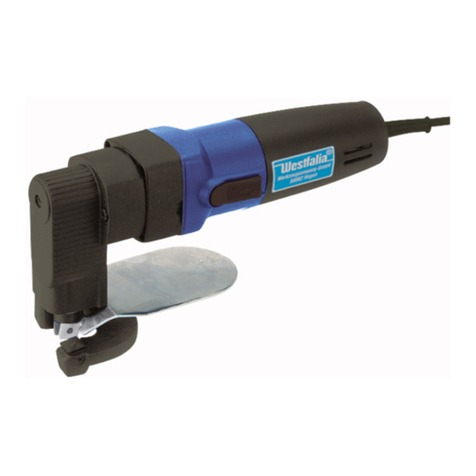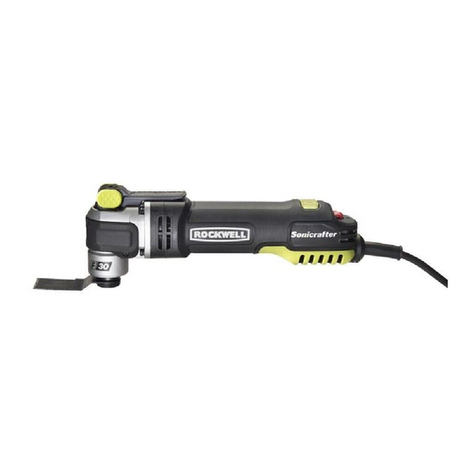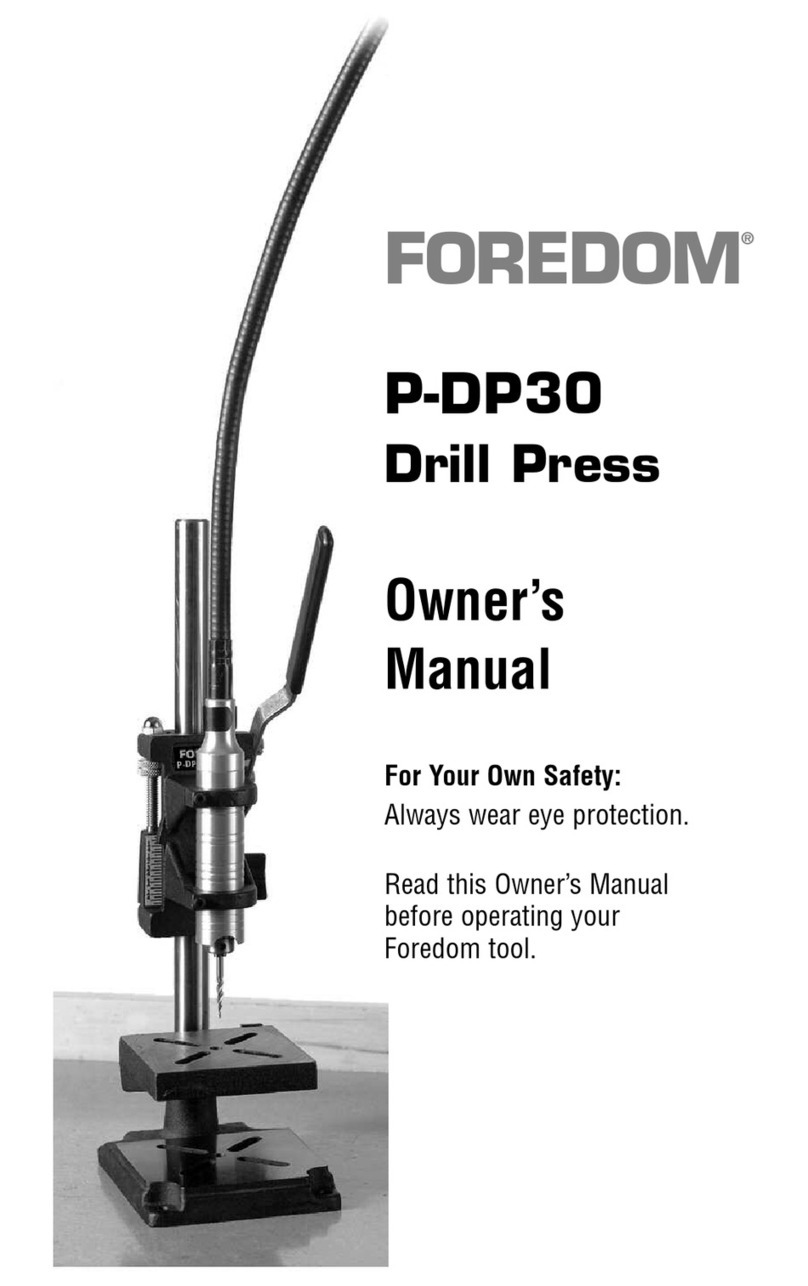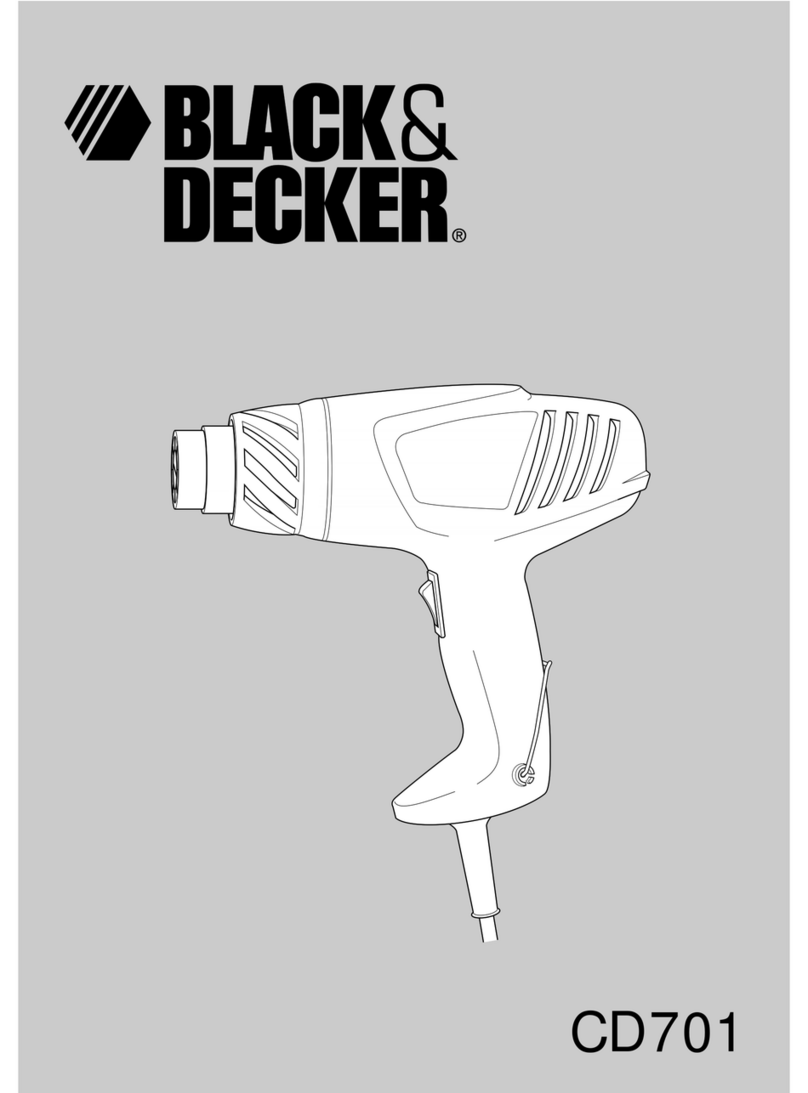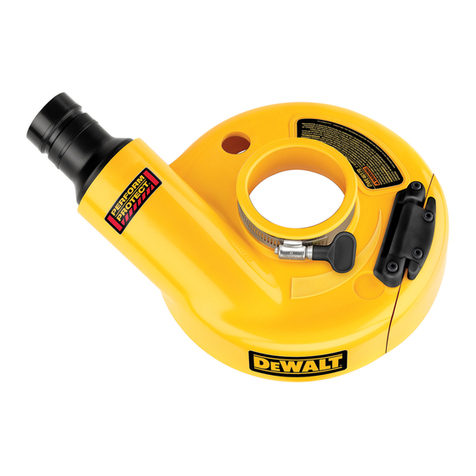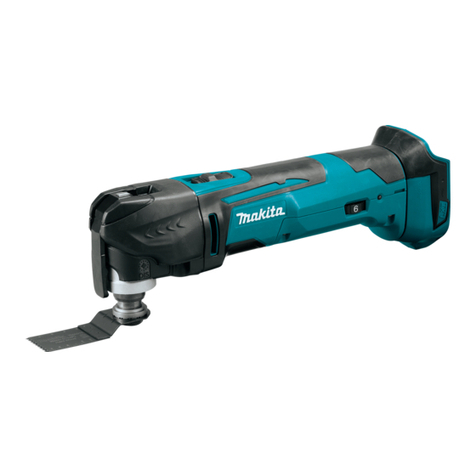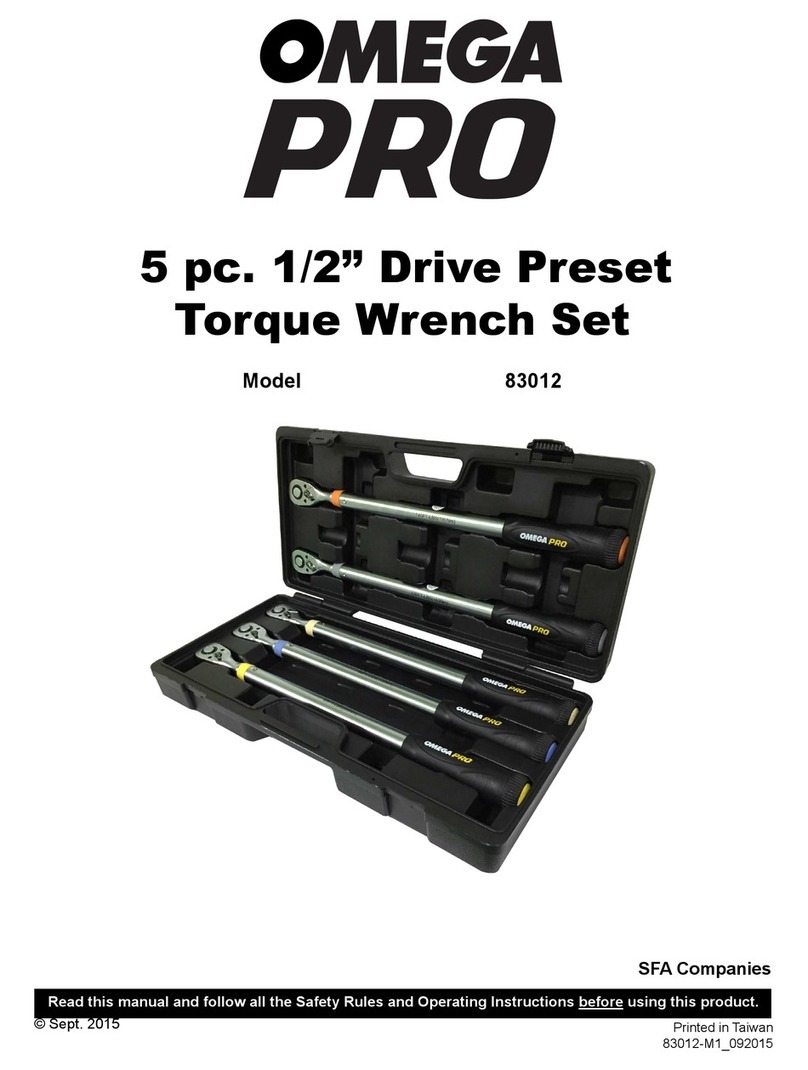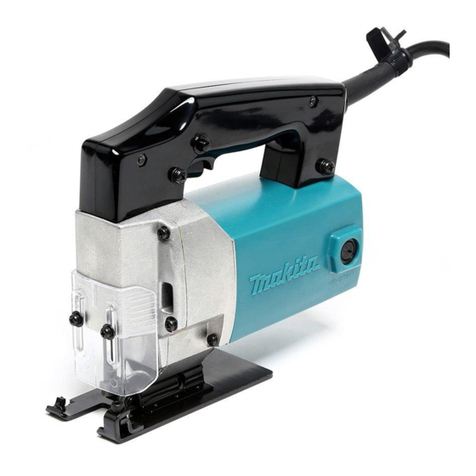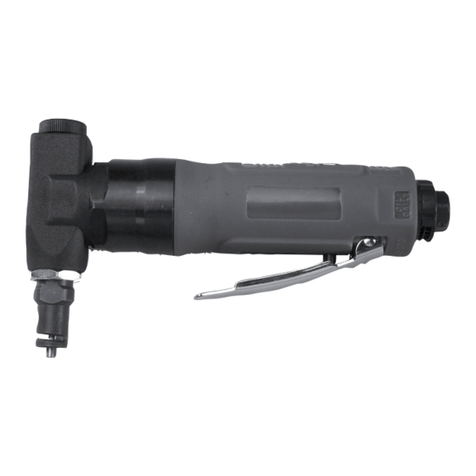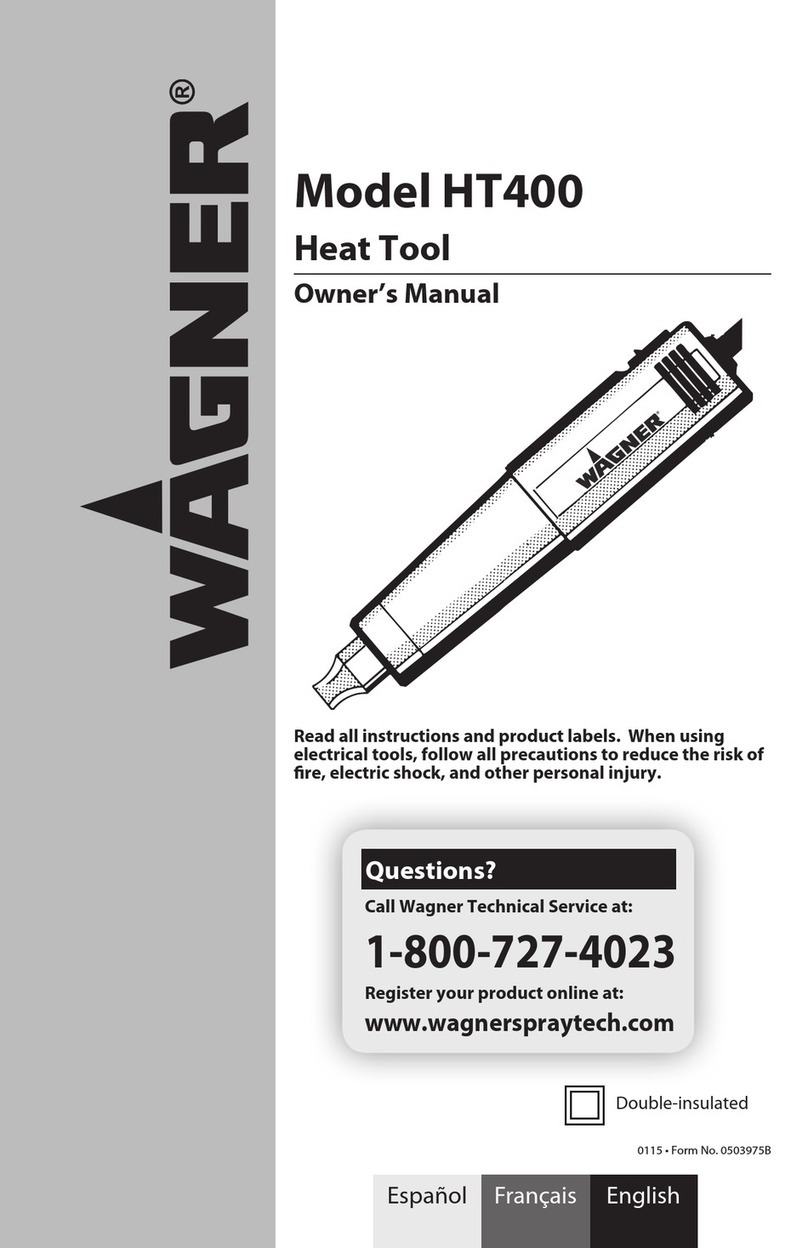SEFMAT RIPACK 3000 User manual

REGISTER YOUR PRODUCT
ONLINE WARRANTY CONTRACT
RIPACK.COM/EN/REGISTER-A-PRODUCT
USER’S GUIDE
NOTICE UTILISATEUR
RIPACK 3000
RIPACK 3000+
YOUR PROTECTION
BY EXCELLENCE

RIPACK® ACCESSORIES
MODULAR EXTENSIONS
Quick and easy assembly of one or more extensions wands on the Ripack
3000 heat gun.
All components are integrated and protected from the environment, use
extension wands to work quickly and easily.
PIVOTING ARM REST
The pivoting arm rest provides increased comfort during use with an extension and folds away after use.
GAS CYLINDER CART
The Ripack gas bottle trolley is the essential accessory
to move your gas cylinders easily and safely and to
ensure the longevity of your equipment.
Its design allows a great support, and the mast assists
you in the handling and protection of the hose. The new
carts were thought to be a real workstation. They are
designed to be a real workstation, which is why they
are equipped with a tool bag, allowing you to carry your
tools easily. The 936+ and 932 carts are also equipped
with a shelf, as well as a magnetic device.

GAS HOSE REEL WINDER
Heavy duty construction for industrial application : corrosion resistant
powder coated steel, four-direction non-snag rollers reducing hose
wear abrasion.
Possible mounting on wall, ceiling on floor.
Provided with swiveling support for a greater ease of work.
Adjustable guiding arm for horizontal or vertical hose release.
MULTICOVER FILM SEALERS
The Multicover sealers allow to make pallet covers and bags from rolls of shrink-film when required and
in any size.
Make savings by avoiding useless stock of various heights and sizes.
MULTICOVER 955 SEALER
Ripack Heat Gun Sealing
MULTICOVER 960
Electrical impulse sealing
2nd reel in option
MULTICOVER 935 DISPENSER

TURBOPACK SHRINK COLUMN
The Turbopack is a mobile heating column, loaded on an easily
movable trolley.
Its unique design allows for a surge of hot air flow for unmatched
efficiency, even on thick films. 50 seconds are enough to heat-shrink
a pallet (Euro type) up to 3.2 meters.
Adapting to your load is very simple, a series of shutoff valves allow
you to consume the right amount of gas and the heat reflector (visor)
plate (optional) can be adjusted with a simple gesture with the help of
a balancer. No need for complex programming, tedious handling or
long and costly training.
CALPACK PALLET RAISER
Quick and easy to set up, the Calpack allows the film to shrink under the pallet. The load is thus perfectly
stabilized with the pallet. Calpack can be used as well with a pallet-truck or a fork-lift.

TOOL BAG CONTENT
Securipack
pressure
regulator
Wrench Swivel
connector 8 m gas
hose
User’s
guide

Ripack 3000
Ripack 3000+
HAND-HELD PROPANE-FIRED SHRINK GUN FOR
SHRINK-WRAPPING PLASTIC FILMS
USER’S GUIDE

CONTENTS
WARNINGS............................................8
OPERATION..........................................14
CONNECTIONS.....................................15
SPARE PARTS......................................17
EXAMPLES OF USE..............................18
MAINTENANCE....................................20
WARRANTY..........................................24
EXPLODED VIEW..................................25
SPARE PARTS LIST...............................27

WARNINGS
TO BE READ BEFORE STARTING FOR THE FIRST TIME.
Do not use this device in regulated areas with specific fire or explosion
hazards.
Do not use the device to shrink the plastic film on a floor made of
combustible material (wood, plastic, etc...).
Delineate a working area such that the tip of the thermal lance is always
at least more than 1,5 m inside this area and prohibit access to
unauthorized individuals.
Make sure there are no leaks on the fittings and inspect the pipe for
cracks or loose connections.
Have to hand an appropriate fire extinguisher or suitably-sized spray
filled with water.
Avoid wearing highly flammable nylon or similar clothing.
Wear heat-resistant gloves while using the device.
Maintain strict supervision for at least 2 hours after retraction.
Check that the regulator fits properly with the gas cylinder.
8

This appliance is meant exclusively for professional use and for shrinking plastic films.
Users of the Ripack 3000 shrink gun must read this user’s guide completely and must be trained for
the applications that require the use of this appliance.
READ ALL INSTRUCTIONS.
This appliance is meant exclusively for professional use.
a. Before using, check all parts for proper function and damage to component parts.
b. Do not use this torch to heat, mold or bend plastic sheets, molding or tubing.
c. Hidden areas such as behind walls, ceilings, floors, soffit boards and other panels may contain
flammable materials that could be ignited by the heat gun when working in these locations. The ignition of
these materials may not be readily apparent and could result in property damage and injury to persons.
d. When working in these locations, keep the torch moving in a back-and-forth motion. Lingering or
pausing in one spot could ignite the panel or the material behind it.”
e. Not use this torch to remove paint (if the torch can be used to remove
paint, items (f) and (g) below shall be used).
f. WARNING: Extreme care should be taken when stripping paint. The peelings, residue and vapors of
paint may contain lead, which is poisonous. Any pre-1977 paint may contain lead and paint applied to
homes prior to 1950 is likely to contain lead. Once deposited on surfaces, hand to mouth contact can
result in the ingestion of lead. Exposure to even low levels of lead can cause irreversible brain and
nervous system damage; young and unborn children are particularly vulnerable. Before beginning any
paint removal process, you should determine whether the paint you are removing contains lead.
This can be done by your local health department or by a professional who uses a paint analyzer to check
the lead content of the paint to be removed.
LEAD-BASED PAINT SHOULD ONLY BE REMOVED BY A PROFESSIONAL AND SHOULD NOT BE
REMOVED USING A HEAT GUN.
This can be done by your local health department or by a professional who uses a paint analyzer to check
the lead content of the paint to be removed.
LEAD-BASED PAINT SHOULD ONLY BE REMOVED BY A PROFESSIONAL AND SHOULD NOT BE
REMOVED USING A HEAT GUN.
g. Persons removing paint should follow these guidelines:
Move the work piece outdoors. If this is not possible, keep the work area well ventilated. Open the
windows and put an exhaust fan in one of them. Be sure the fan is moving the air from inside to outside.
Remove or cover any carpets, rugs, furniture, clothing, cooking utensils and air ducts.
Place drop cloths in the work area to catch any paint chips or peelings. Wear protective clothing such as
extra work shirts, overalls and hats.
Work in one room at a time. Furnishings should be removed or placed in the center of the room and
covered. Work areas should be sealed off from the rest of the dwelling by sealing doorways with drop
cloths.
Children, pregnant or potentially pregnant women and nursing mothers should not be present in the work
area until the work is done and all clean up is complete.
Wear a dust respirator mask or a dual filter (dust and fume) respirator mask which has been approved by
the Occupational Safety and HealthAdministration (OSHA), the National Institute of Safety and Health
(NIOSH), or the United States Bureau of Mines. These masks and replaceable filters are readily available
at major hardware stores. Be sure the mask fits. Beards and facial hair may keep masks from sealing
properly. Change filters often. DISPOSABLE PAPER MASKS ARE NOT ADEQUATE.
Use caution when operating the heat gun. Keep the heat gun moving, as excessive heat will generate
fumes, which can be inhaled by the operator.
Keep food and drink out of the work area. Wash hands, arms and face and rinse mouth before eating or
drinking. Do not smoke or chew gum or tobacco in the work area.
Clean up all removed paint and dust by wet mopping the floors. Use a wet cloth to clean all walls, sills and
any other surface where paint or dust is clinging. DO NOT SWEEP, DRY DUST OR VACUUM. Use a high
phosphate detergent or trisodium phosphate (TSP) to wash and mop areas. 9

10.At the end of each work session put the paint chips and debris in a double plastic bag, close
it with tape or twist ties and dispose of properly.
11. Remove protective clothing and work shoes in the work area to avoid carrying dust into the rest
of the dwelling. Wash work clothes separately.
Wipe shoes off with a wet rag that is then washed with the work clothes.
Wash hair and body thoroughly with soap and water.
10.At the end of each work session put the paint chips and debris in a double plastic bag, close it with
tape or twist ties and dispose of properly.
11. Remove protective clothing and work shoes in the work area to avoid
carrying dust into the rest of the dwelling. Wash work clothes separately.
Wipe shoes off with a wet rag that is then washed with the work clothes.
Wash hair and body thoroughly with soap and water.
h. Close the valve of the gas bottle when not in use for long periods of time.
i. Press the trigger to empty the gas hose and release the pressure.
j. Never heat a specific area continuously.
k. Keep the working zone clean and remove all waste (wood, paper, other inflammable materials).
l. For all work inside professional workshops, the gas bottle must be placed on a mobile trolley that can be
maneuvered easily.
m. SAVE THESE INSTRUCTIONS.
This user’s guide must be kept for future reference.
Do not use this appliance for shrinking plastic film on materials, substances, products or liquids that
inflame spontaneously, either processed in bulk or packed, and do not use the appliance in the storage
areas of these products or in spaces where it is explicitly forbidden to smoke for safety reasons.
Do not use this appliance for shrinking plastic film on a floor that is made of combustible material (wood,
plastic, etc..).
Close the valve of the gas bottle when not in use for long periods of time.
Press the trigger to empty the gas hose and release the pressure.
Never heat a specific area continuously.
Keep the working zone clean and remove all waste (wood, paper, other inflammable materials).
For all work inside professional workshops, the gas bottle must be placed
on a mobile trolley that can be maneuvered easily.
This appliance, like all other gas appliances, consumes air and produces combustion fumes that
contain CO2 and CO.
Exposure to high concentrations of the latter gas is lethal. Make sure there is sufficient ventilation
in accordance with the amount of time the appliance is used (see «Technical Characteristics»).
We recommend that the appliance be used in a room without specific pollution which has a
minimum volume of 16 m³ (fresh air flow: 48m³/h).
Never work in a basement.
Before using the appliance, make sure that you are conforming to the guidelines for using liquid gas.
10
In operation, this appliance produces a flame. Do not point the flame towards yourself,
other persons or animals, towards the gas bottle or the hose, or towards inflammable
materials.

In operation, the appliance creates a danger zone up to 1.5 meters (5 feet) in front of the fire
nozzle.
We draw the attention of operators to the fact that within the danger zone, there is a possible risk of
burning for persons and animals, and goods can be damaged or catch fire.
In use, the gun must always be in motion so that the material used does not exceed the maximum
temperature specified by the supplier.
This temperature depends on the operating distance, the exposure time and the power setting of the
device.
This appliance, which is designed for applying plastic films by heating, can also be used for other
purposes where the products can withstand the heat produced by a naked flame. Such use is explicitly the
responsibility of the user. The manufacturer’s guidelines of the product that is being handled must be
always followed. In addition, the national, federal and local regulations regarding the operation of
appliances with a naked flame must also be respected.
To operate the appliance safely, you must follow the warnings mentioned above as well as the guidelines
provided by the manufacturer of the materials being handled. The safety distance, the duration of
exposure and the adjustment of the appliance for the different materials being handled, depend on the
instructions provided by the manufacturer of the materials in question.
Always contact your RIPACK distributor for all maintenance work and spare parts.
As a reminder, the hose supplied with your gun is a wearing part that is not covered by the warranty. To
ensure proper operation, please make sure that the hose is stored properly and that it is not lying on the
floor when using your gun.
11

The RIPACK 3000 propane works with propane according to the principle of atmospheric air
burners induced at high speed (diagram B).
Ignition is performed using a piezoelectric lighter that is activated simultaneously with the release of gas
activated by the trigger, which is the sole operating mechanism.
The RIPACK 3000 is a gun incorporating several safety mechanisms:
•Its original and patented design ensures combustion without heating the combustion nozzle (cold
nozzle).
•A security valve system cuts off the gas supply if the hose breaks or tears.
•An automatic safety device (so-called dead man’s switch) cuts the supply of gas automatically if the
trigger is released. This stops the heating immediately. This dead man’s device must never be
blocked in the open position in any way.
•A guard in front of the trigger prevents untimely operation
Flame
Beginning
Flame stabilisation
grid
Aspirated air
Igniter
Gas tap
B
12

PROPANE GAS APPLIANCE
TECHNICAL CHARACTERISTICS :
SI SYSTEM
Pressure (bar)
1,5 to 3,5
Power (kW)
45 to 80
Consumption (kg/h)
2,9 to 5,2
Air intake (m3/h)
39 to 70
CO emission vol %
0,0052 to 0,0021
CO2 emission vol %
2,81 to 4
Noise level
< 85 dbA
Length
37,5 cm
Weight
1250 g
Energy source
Propane gas
Other energy source
Natural gas with conversion kit
ANGLO-SAXON SYSTEM
Pression (PSI)
21 to 50
Puissance (btu/h)
153 000 to 272 000
Consommation (lbs/h)
6,75 to 11,9
Air aspiré
1340 cu.ft/h to 2400 cu.ft.h
Emission CO vol %
0,0052 to 0,0021
Emission CO2 vol %
2,81 to 4
Niveau sonore
< 85 dbA
Longueur
15 inches
Poids
2,7 lb
Source d’énergie
Propane gas
Autre source d’énergie
Natural gas with conversion kit
13

OPERATION
Before operating the appliance, you must read all the warnings mentioned above and make sure
that using the appliance is not forbidden by the manufacturer of the materials that you are going
to handle.
With this appliance you must use the ORIGINAL hose and SECURIPACK that were supplied.
FORBIDDEN WITH ALL USES
LIQUID PROPANE GAS
(E.G fuel forklift truck)BOTTLE ON ITS SIDE
The Ripack 3000 works with PROPANE gas in gas phase, contained in
bottles of different capacities.
Use the largest possible bottles available.
Always connect and disconnect the bottles a long way from any flames and ignition points.
For all work inside professional workshops, the bottle must be placed on a mobile trolley that can be
maneuvered easily.
14

CONNECTIONS
Before connecting the SECURIPACK to the gas
bottle, make sure the sealing gasket is positioned
correctly for systems using this type of joint.
In other cases, make sure the fitting is clean.
15
56

TIGHTNESS
Use a bubble spray or some soapy water to check
that there are no leaks in the parts that have been
screwed together (bottle, hose and gun connections).
IGNITING THE RIPACK 3000
POWER KNOB
16

NEVER WORK WHILE HOLDING THE RED BUTTON.
The SECURIPACK automatically cuts off the supply of gas if the
pressure drops below the minimum level necessary for the normal
efficiency of the work.
This is the case when:
•The bottle is nearly empty (the gun can only be used for a few more minutes at reduced power: change
the bottle);
•The temperature of the bottle has dropped after intensive use (icing): if this is the case, change the
bottle temporarily or wait until the normal pressure returns, especially if you are working outside (0°C /
30°F and colder).
NEVER HEAT A GAS BOTTLE WITH A FLAME.
WHEN YOU HAVE FINISHED WORKING, ALWAYS CLOSE
THE GAS BOTTLE VALVE AND EMPTY THE HOSE BY
PRESSING THE TRIGGER.
After using your shrink gun, be sure to drain the remaining gas from the extension.
To do this, turn off the gas supply and the pressure regulator and pull the trigger
slightly to purge the gas from the tube.
SPARE PARTS
THE COMPANY RIPACK SHALL NOT BE HELD LIABLE IN THE EVENT THAT THE GUN IS
DISMANTLED.
Contact your dealer if the RIPACK 3000 needs to be
dismantled.
Only the procedures described in the maintenance chapter
are authorized.
17

EXAMPLES OF USE
SHRINK-WRAPPING A LOADED PALLET
Ask your film supplier for the operating instructions.
The pallet must be lifted so that the four corners are accessible: the
purpose of this is to allow the film to be shrunk under the pallet and so
ensure very strong cohesion between the pallet and the load it supports.
You will find an accessory in the RIPACK product range that is designed
specially to keep pallets lifted from the ground: the CALPACK (contact your
dealer).
Slide the shrink cover, which must be about 5% wider than your pallet and
sufficiently long to be able to be shrunk under the pallet (H plus 200 mm).
Ignite your RIPACK 3000 as explained in the chapter «Operation».
SHRINK-WRAPPING RECOMMENDATIONS
Remain at a distance of at least about 30 centimeters from the film and start
shrink-wrapping the lower part of the four sides so the pallet is shrink-
wrapped underneath. Make sure you point the air flow
perpendicularly along the sides of the pallet.
Apply the heat in a continuous movement and at a constant speed.
(in the absence of instructions provided by the film manufacturer):
NEVER STAY ON THE SAME SPOT
The various films react differently, so you must observe the reaction and adapt
your speed and movement and/or the distance between the nozzle and the film
accordingly.
You can also adjust the power of the RIPACK 3000 with the adjustable
SECURIPACK controls.
Once the lower part of the pallet has been shrink-wrapped, continue the
operation for each side and move from top to bottom to cover the entire height.
Once the 4 sides have been shrink-wrapped, you can do the top by applying the
hot air to the top of the pallet.
CAUTION: The film is already stretched along the sides so you should apply less
heat on the top in order to prevent the cover from being damaged.
18

When you have stopped applying heat with the gun, the plastic film, because
of its make-up, will continue to shrink for some time. This time will vary
depending on the quality, the thickness and the type of load that has been
wrapped. It is recommended therefore that you wait until the cover has
cooled off and everything is tight before moving the pallet.
After cooling and before storage, always check that the cover and the
wrapped goods are in good condition.
CHECK CAREFULLY FOR AT LEAST 2 HOURS AFTER
SHRINK-WRAPPING.
PACKAGING
All kinds of objects with irregular shapes can also be packaged
using shrink-wrap film.
To obtain a good film joint, you need to provide a minimum overlap
of 30 cm.
Start by heating the film in a continuous movement and then put
pressure on this part to connect the two parts together.
Once the joint has been made, continue the shrink-wrapping by
holding the appliance at least 30 cm from the film. When doing this,
be sure to follow the recommendations for shrink-wrapping.
NOTE : The combustion nozzle can rotate freely, and this will make your work easier.
Put the nozzle in the required position.
19

MAINTENANCE
MALFUNCTION DIAGNOSIS
NO GAS COMING OUT OF YOUR RIPACK 3000
CYLINDER VALVE CLOSED
Open the faucet by 90°.
TOO HIGH FLOW RATE
(The internal safety of the gas
cylinder can shut off the flow if the
valve is opened too much). Close the valve.
Open the faucet by 90°.
Purge the gas circuit in the
shrink gun.
REGULATOR
IMPOSSIBLE
TO PRIME
NOTE
: the red button cuts off the gas supply below
a pressure that is too low for the operation of the
Ripack 3000.
Change the bottle
The regulator only works
with propane gas
Continuous use causes the
bottle to frost
(provide a replacement cylinder
while the gas warms up).
The outside temperature is low
Store the bottles in a
temperate room.
NOTE: THE PRESSURE OF THE GAS IN A CYLINDER IS PROPORTIONAL TO THE TEMPERATURE
OF THE GAS.
20
This manual suits for next models
2
Table of contents
Languages:
Popular Power Tools manuals by other brands

ERICO
ERICO SBG200 Instruction and maintenance manual
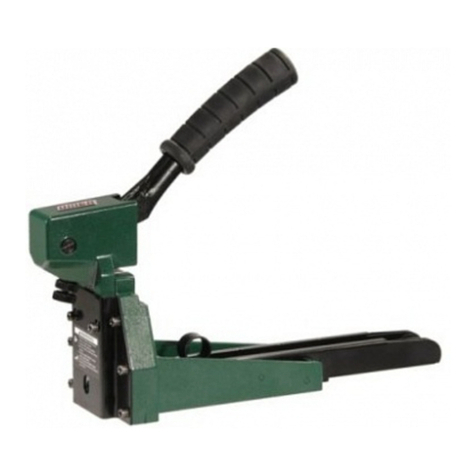
Omer
Omer 32.18 M Use, maintenance and spare parts manual
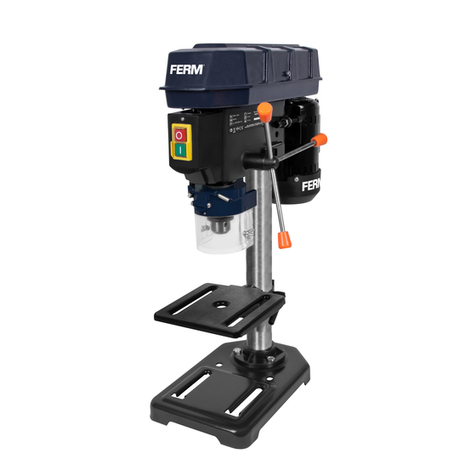
Ferm
Ferm TDM1027 Original instructions

Atlas Copco
Atlas Copco ETV S7 Original product instructions
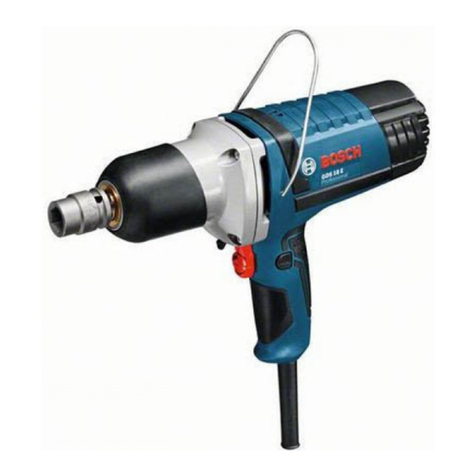
Bosch
Bosch GDS 18E Professional Original instructions
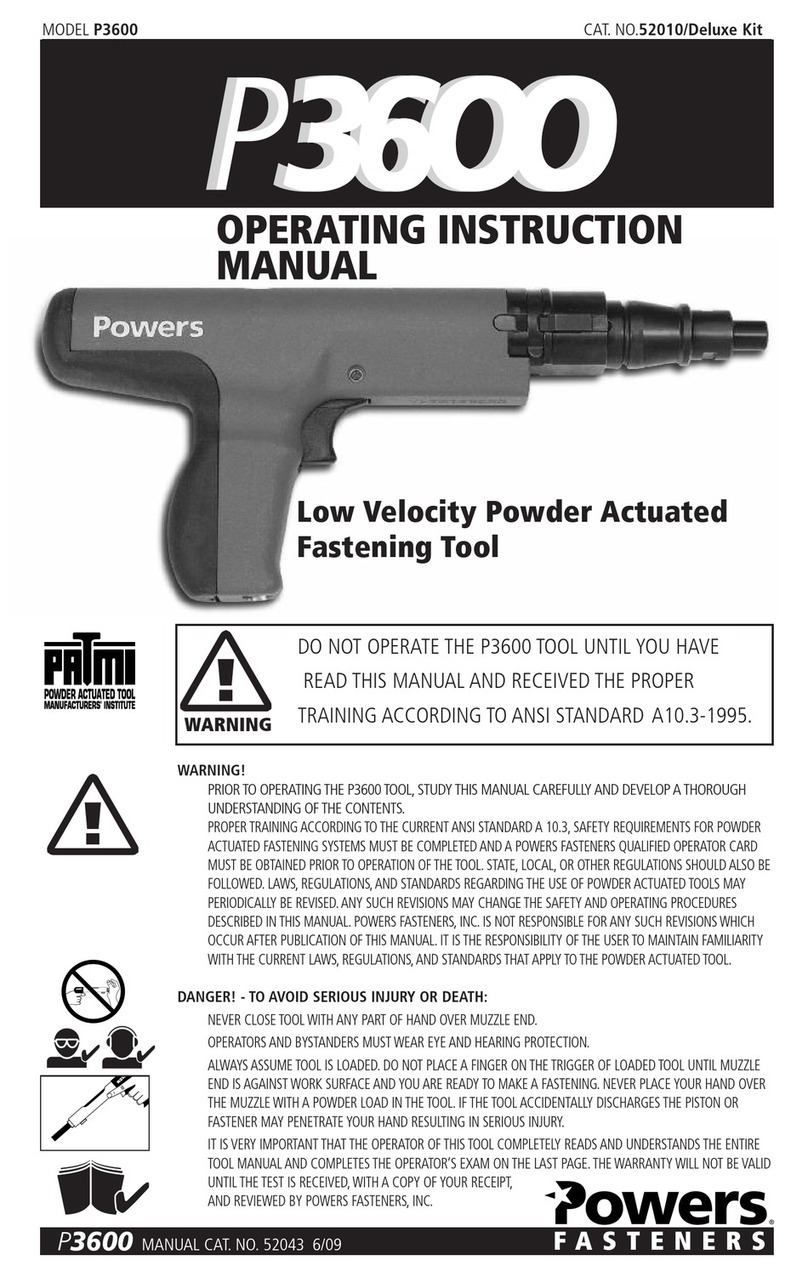
Powers
Powers P3600 Operating instructions manual


